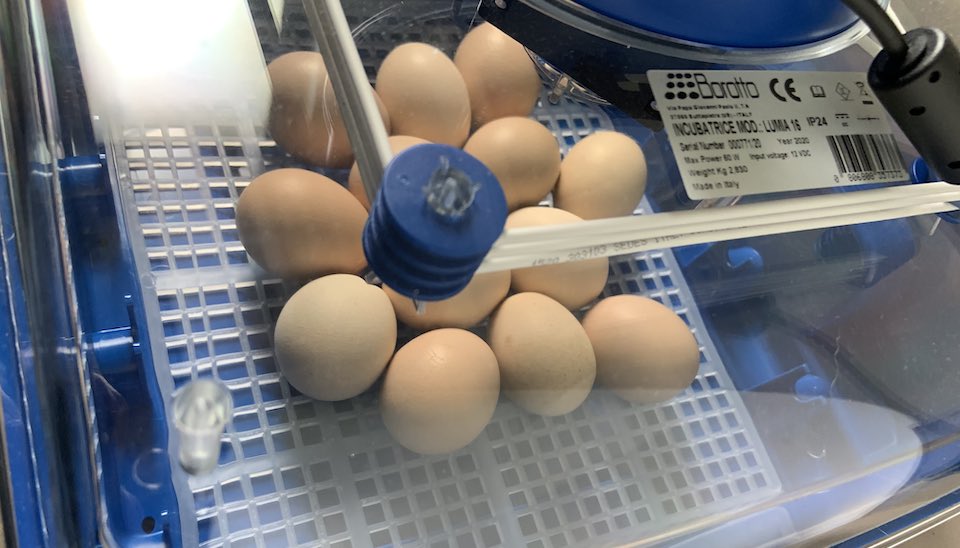Can You Increase the Chances of Female Chicks When Incubating Eggs?
How to Get More Female Chicks: Tips for Incubating Eggs
Chicken keepers often ask us if there is a way to increase the chances of hatching hens instead of roosters.
The simple answer is no, of course. If there was an affordable way to reliably influence the sex of chicks, the chicken industry would be doing it for sure!
That said, there are methods that are supposed to increase the number of female chicks. Some are complete nonsense. But there are others that have some evidence of success.
If you have paid for fertilised eggs, it would be silly not to incubate all of them because of an unproven theory. But if you are hatching eggs from your own flock, you might have enough to experiment. After all, un-incubated eggs are just a free breakfast!
Even a slight increase in the ratio of hens to roosters will save you time and money, so if you have enough eggs to choose which ones you incubate, why not give some of these methods a try? They might not work, but you have nothing to lose!
Key Takeaways:
- No Guaranteed Method: There is no foolproof way to control the sex ratio of chicks, but certain methods may slightly influence how many males and females you get.
- Sex Ratios: Factors like egg genetics and chick mortality impact how many hens or roosters you ultimately end up with.
- Egg Shape Matters: Rounder eggs are more likely to produce female chicks, while pointed eggs may result in males, but this isn't a given and it can be hard to tell what shape an egg is just by looking at it.
- Timing and Selection: Incubating eggs laid before 11 am and breeding from hens with a history of producing more females could increase your chances of hatching hens.
- Experiment Cautiously: If you have eggs to spare, there are methods to increase the changes of hatching hens, but there is no guarantee they will work.
What is the sex ratio of chicks?
The sex ratio is how many male and female chicks you will get from a given number of eggs. The sex ratio for chickens is 50/50. That is, if you hatch 100 chicken eggs, you will get 50 roosters and 50 hens.
So why is it that you don’t always end up with 5 hens and 5 roosters from 10 eggs? There are three things to consider:
- The Primary Sex Ratio
The Primary Sex Ratio refers the the genetic sex of fertile eggs.
Even though the Primary Sex Ratio of chickens overall is 50/50, individual hens may have their own bias for producing more male or female chicks. One study suggests that a hen's sex ratio can vary from 22 % to 65 % male chicks, which is a huge difference!
Other factors that can influence the Primary Sex Ratio include the condition of the hen - jungle fowl in good condition produce more male chicks, and stressed chickens tend to produce more female chicks. Not that we want to decrease the condition of our hens or stress them out, which would obviously decrease overall productivity and hatch rate!
Eggs laid before 11 am may also produce more female chicks, according to one study.
- The Secondary Sex Ratio
If you have ever candled eggs, you will know that not all fertile eggs produce a living chick.The Secondary Sex Ratio refers to how many male and female chicks successfully hatch.
In chickens, female chicks are more likely to die before hatching and this is more prevalent in certain breeds of chicken than others.
On the other hand, male chicks are more susceptible to low storage temperatures prior to incubation and possibly low temperatures during incubation. Storing fertile eggs at 4 degrees Celsius prior to incubation, instead of the normal 12-15 degrees Celsius, can increase the number of female chicks by 4 %, but it decreases the overall hatch rate too.
- Tertiary Sex Ratio
The Tertiary Sex Ratio refers to how many male and female chicks survive from hatch to adulthood.
We always thought that it was because we wanted hens that every time a chick met an untimely end by accident or predator, it was a female. But it turns out that this phenomenon isn't just bad luck. Instead, female chicks seem to have higher mortality than males, making them less likely to reach adulthood. The study I found looked at plover chicks, but it certainly seems to apply in our chicken coop!
What determines if a chicken chick is male or female?
Like humans, the sex of a chicken chick is determined genetically. So a fertile chicken egg is genetically either male or female. This is the Primary Sex Ratio.
As well as hens' individual differences, hormones can increase the proportion of male or female eggs produced by a hen. Scientists have experimented with oestrogen implants, which do seem to increase the proportion of female chicks but, of course, cannot be replicated at home.
Wild birds can actually influence the sex ratio of the chicks they produce. This is an ability that helps ensure the survival of the species in difficult seasons, and is believed to have been lost by domestic chickens. Scientists are unsure if wild birds do this by producing more eggs of one sex than the other, or by influencing the Secondary Sex Ratio during incubation.
In addition, a lot of old-time chicken keepers will tell you that if you set eggs under a hen in winter or early spring you will get more female chicks than from clutches later in the season. Studies seem to debunk this idea but if male chicks are more susceptible to low temperatures during incubation, a hen that sits during colder weather or leaves the nest more often could potentially produce more female chicks.
While these factors can influence whether a chick is male or female to begin with, the Secondary and Tertiary Sex Ratios play a role in determining which chicks hatch and reach adulthood.
Identifying male and female eggs for incubation
It isn’t possible to accurately identify the sex of an egg before incubation except through expensive scientific tests that just aren’t widely available.
However, there are two methods for choosing male and female eggs to incubate that are worth trying. Neither is scientifically proven to work, but if you have eggs to spare when you are incubating and would prefer more hens, then you don't have anything to lose by trying! After all, even a couple of extra hens is worth it.
- Egg Shape
There has long been an old wives' tale that the female eggs are more rounded and the male eggs are more oval or pointed. A recent scientific study has proven this true, showing that egg shape can be used determine the sex of chicks with 80 % accuracy. Considering that vent sexing is only 90 % accurate, that is pretty good!
The study used mathematical parameters to determine the shape of the egg based on the ratio of the long and short diameters. Such measurements may be beyond the backyard chicken keeper, and breed and hen age would influence the accuracy of the method, but choosing rounder eggs to incubate if you want more hens is easy enough to make it worth trying! Right?

Well, I did a quick survey of the eggs in the fridge (above). They are from ISA Browns, which seem to tend towards rounder eggs generally (based on my observations). Just with looks, it was very hard to tell which eggs were more oval except where it was really obvious, so you can see that most eggs went into the "not sure" basket. I might be waiting a while for a full incubator of "rounder" eggs!
- Air Chamber Position
Chicken eggs have an air chamber that provides the growing chick with oxygen. The air chamber is usually found in the large end of the egg, and a 1921 book from the American Poultry School suggests that the position of the air chamber can be used to identify the sex of the chick.
This method requires selecting eggs based on size and shape, and then candling the eggs to determine the position of the air chamber. The author suggests that the method is infallible, as long as you are ruthless about the eggs that you incubate. Any eggs that you are even slightly unsure of should not be used.
For female chicks, select medium-sized, smooth eggs that are rounder in shape. The air chamber must be located to one side of the large end of the egg.
For male chicks, select large eggs that are "long in shape" (more pointed). The air chamber must be located squarely in the centre of the large end of the egg.
This method might be influenced by the breed of chicken, and obviously relies on having plenty of your own eggs to choose from.
To try this method, full instructions can be found here, beginning on page 31.
How to influence the sex of chicks at home
Ultimately, anything we try to influence the sex of chicks is going to be experimental. So unless you have more eggs than you need to incubate, and are getting them for free, these methods probably aren’t worth trying. After all, a dozen fertile eggs costs at least $25 and often much more!
But if you have your own flock and get more than enough eggs for incubating, then you can probably afford to be selective and engage in a little experimentation. After all, there is no real downside and if you end up with more hens, so much the better!
Here is what you can do to try to increase the number of female chicks that you hatch:
- Keep track of your hens: Get to know your breeders and then breed from hens that tend to produce more female chicks.
- Use morning eggs: It seems too simple to be true, but there is nothing to lose by only incubating eggs laid before 11 am.
- Consider egg shape: It isn't so easy when using your eyes instead of scientific parameters, but choose rounder eggs if you want female chicks and more pointed eggs if you want males.
- Try candling: Try the candling method outlined above and be ruthless about only incubating the eggs that meet requirements.
Conclusion
In conclusion, while no method can definitively promise more female chicks, the techniques mentioned here present exciting opportunities for experimentation. By selecting eggs based on shape, timing, or hen characteristics, you might increase the chances of hatching hens over roosters.
These methods are by no means foolproof, but even a small difference is worthwhile. We'd love to hear your results if you try them.
Happy hatching!
Rachael at Dine a Chook Australia



